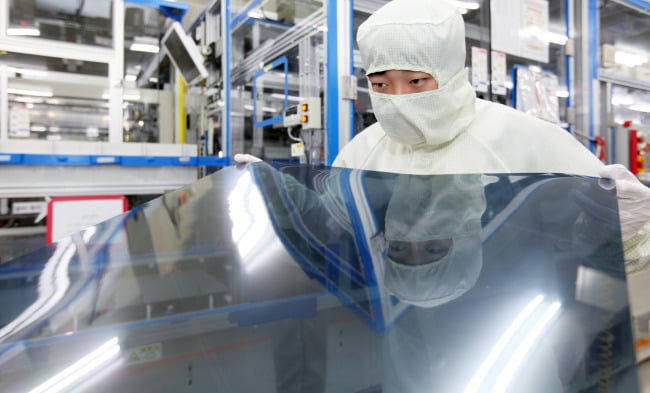LG, which has poured more resources into the still-nascent but more lucrative organic light-emitting diode TV, now has come up with its own upgraded version of the LCD, the Nano Cell.
LG said its Nano Cell uses 1-nanometer uniform particles to create more subtle, accurate colors that retain their integrity from wider viewing angles — up to 60 degrees — than other LCD TVs, including Samsung’s Quantum Dot that uses 2- to 11-nanometer particles.
“Red colors on typical LCD TVs can often be polluted by other color wavelengths such as yellow or orange, losing their accuracy,” said Kang Kyoung-jin, a senior researcher. “Nano Cells absorb surplus light wavelengths, resulting in more accurate color reproduction.”
Along with reducing potential color degradation issues, Nano Cell also boasts cheaper production costs. A Nano Cell coating is put directly on the mother glass, which requires no extra equipment or change in the overall manufacturing process.
“Due to the cost effectiveness compared to Quantum Dot films, orders are already soaring especially from Chinese TV makers such as Skyworks and Kongga,” the researcher added.
LG plans to launch some 30 new TV models this year, with those featuring Nano Cell making up almost half.
Despite the overall benefits, LG would not say Nano Cell is an alternative to OLED.
“Still, OLED is the most premium model for LG TVs. OLED’s color contrast is of different level from LCD,” said Lee Hee-young, the team leader at product planning.
LG appears to be avoiding having its OLED TVs rival Samsung’s Quantum Dot by positioning the latest Nano Cell in between models.
Currently, the OLED is considered the most advanced display technology despite Samsung’s claims that its LCD-based Quantum Dot competes head-on with the OLED. Samsung suspended OLED TV production in 2013 due to high costs and low yields.
With the two-track strategy, LG has been aiming to expand its presence in the premium TV market. Last year, the company topped $2,500-plus TV sales thanks to high-priced OLED models.
In terms of LCD TV sales, its market share remained at 12.8 percent, compared to Samsung’s 21.8 percent.
Industry watchers say pricing is the key to the Nano Cell’s success. The TV sets start at 2.4 million won ($2,100) for the 55-inch model and 4.5 million for the 65-inch model. Samsung has almost doubled prices of Quantum Dot TVs from last year. It costs $3,500 for the curved 55-inch and $4,800 for the curved 65-inch.
Post Disclaimer
Some of our content may contain marketing links, which means we will receive a commission for purchases made via those links. In our editorial content, these affiliate links appear automatically, and our editorial teams are not influenced by our affiliate partnerships. We work with several providers (currently Skimlinks and Amazon) to manage our affiliate relationships. You can find out more about their services by visiting their sites.





Similar threads
- Mike Up
- Displays
2- Martin Dew
- Displays
2